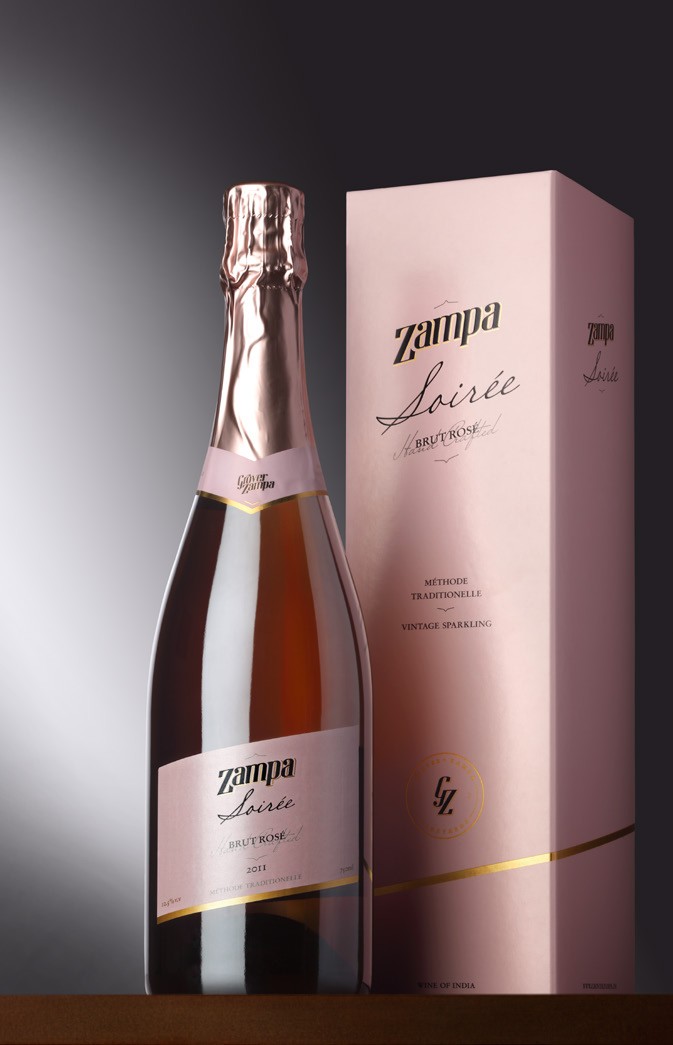The sparkling wine segment is finding better acceptance and the volume of sales is growing.
To capitalise on this trend, informs Sumedh Singh Mandla, CEO, Grover Zampa Vineyards, “we have doubled our capacity for sparkling wine and started producing it in our Bangalore winery in addition to the one in Nashik, which has been at it since 2007”. Last year, he adds, the company registered more than 70 per cent growth in volumes in this category.
At present, Grover Zampa has four sparkling wines in its portfolio — all produced using the traditional method and they have found a market in 15 states across India as well as in six international locations, including the UK, France, Germany, Japan, Hong Kong and Singapore. Grover Zampa, incidentally, is the only producer of vintage sparkling wine in India. The average price of the Soiree Brut is Rs 1,200 and its Brut Rose variant sells for Rs 1,300 across India. The Magnifique Brut and Brut Rose are a little higher priced, retailing for Rs 1,250 and Rs 1,350, respectively.
The market for sparkling wines, however, is still in its infancy in India. “We have a very small base of consumers with an evolved palate for sparkling wine or for that matter for other categories of wines,” says Mandla.
“These consumers do understand the finer nuances of sparkling wines, and because of them, the category is getting trendier and the market appears to be poised for growth.”
Quality, consistency and innovation, says Mandla, have been Grover Zampa’s core values. “We are quite happy with the quality of our offerings. The recent awards we have won at international and domestic competitions stand as testimonials to this commitment,” he says. “Being a quality producer, we would like to offer our wines to people with discerning palates through leading HORECA and premium retail outlets,” Mandla adds. At present, five Indian producers straddle the sparkling wine category. The competition may be intense, but Mandla says it is because the segment is still quite small. “The volumes for this category will definitely show strong growth in the coming years,” Mandla predicts confidently, adding: “Sparkling wines, irrespective of their origin, will sell at a price point between Rs 1,000 and Rs 2,000 because of competition.”
The growing popularity of Cava and Prosecco does not unduly worry Mandla. “With a per capita consumption
as low as a tablespoon, the wine market can only grow, so the more brands the merrier,” he says. “We need more investment in education and creating awareness, and in giving greater exposure to our products. We believe that if socio-political and economic factors remain positive, the wine industry will grow by at least 15-20 per cent year on year over the next decade. This itself can provide great expansion opportunities to all quality domestic and international brands.”
Among the international sparkling wines, Champagne has the largest share, followed by Prpsecco and other segments such as Cava and the various cremants. The acceptability and volumes of Prosecco are al growing because of t popularity of Italian cuisi and the good price:val ratio the category offers.
“Sparkling wines, irrespective of their origin, will sell at a price point between Rs 1,000 and Rs 2,000 because of competition.”
Talking more spe about the sparkling segment in the country, said the key determining for purchase decisions a taste, brand, region and The top five markets a Mumbai, Bangalore, G Pune.
“Serious producers can achieve better acceptance and volumes by maintaining right quality, pricing, width of distribution and brand awareness,” says Mandla. “We believe in this segment and expect double-digit growth.” To gain greater awareness of the products, he suggests tailor-made activations, such as brunches, pairing events and promotions of sparkling wine cocktails, in association with trade partners.
If Mandla exudes confidence, it is because he believes Indian sparkling wines offer good quality. Most of the producers use the premium technique Method Traditional (as it is followed in Champagne) — and the results are quite impressive. “We have participated in several international competitions and have won appreciation for our quality,” Mandla says with justified pride.
“We launched our international distribution for this category only last year and it has already shown good progress. France is our first export market and we have received positive feedback from there and other European markets. We believe we offer very high quality at a very good value,” Mandla emphasises. That’s the sentiment the market appears to share.


